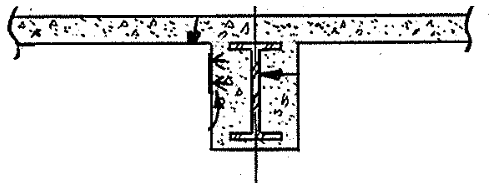CrabbyT
Structural
- Feb 12, 2019
- 165
In your structural models, what do you think about using shell elements to represent concrete floor/roof slabs?
I've been hesitant to do this because the effects seem drastic. For comparison, I made two duplicate models. One uses area loads to represent a roof deck, the other uses shells. I took care to make sure the loads and pressures were equivalent between the two models.
For the roof purlins, using shells vs. area loads results in stress ratios of 0.49 and 0.75 respectively.
The building I'm dealing with is a steel structure encased in concrete. The beams were wrapped with wire mesh when the building was constructed in the 40's. Based on the AISC Steel Manual from 1947, I believe this was treated as a composite system.
Anyway... thoughts? I've always had some concern that shell elements could add unrealistic amounts of rigidity to the stiffness matrix, but I don't know if my concern is valid. It's more conservative (for the steel, anyway) to exclude any contribution from the slab. But is it unrealistic to include it?
CrabbyT
I've been hesitant to do this because the effects seem drastic. For comparison, I made two duplicate models. One uses area loads to represent a roof deck, the other uses shells. I took care to make sure the loads and pressures were equivalent between the two models.
For the roof purlins, using shells vs. area loads results in stress ratios of 0.49 and 0.75 respectively.
The building I'm dealing with is a steel structure encased in concrete. The beams were wrapped with wire mesh when the building was constructed in the 40's. Based on the AISC Steel Manual from 1947, I believe this was treated as a composite system.
Anyway... thoughts? I've always had some concern that shell elements could add unrealistic amounts of rigidity to the stiffness matrix, but I don't know if my concern is valid. It's more conservative (for the steel, anyway) to exclude any contribution from the slab. But is it unrealistic to include it?
CrabbyT


![[smile] [smile] [smile]](/data/assets/smilies/smile.gif) )
)